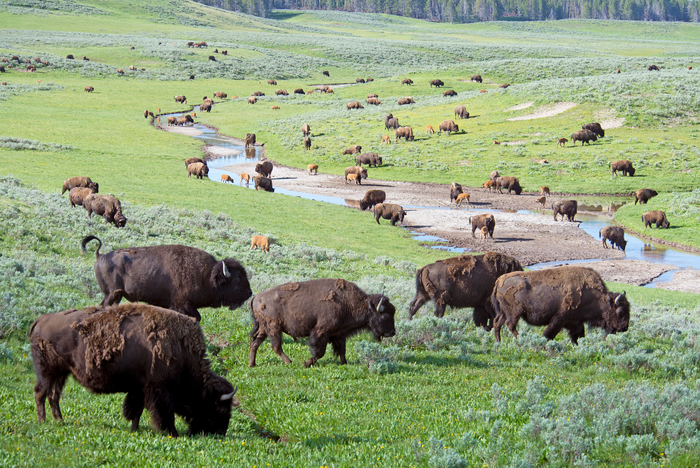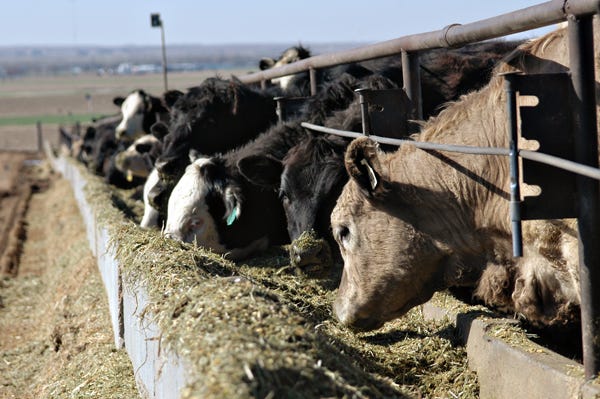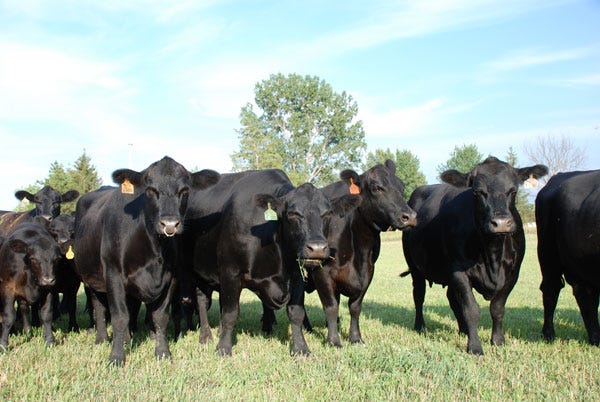Does U.S. beef have a chance, under Trump’s administration, to break into the elusive Chinese market? That and more awaits you in this week’s Trending Headlines.

Trump urged to push U.S. beef during summit
Does U.S. beef have a chinaman’s chance of getting into China? More than six months after China promised to end a ban on American beef imposed in 2003 after a case of mad-cow disease, U.S. producers still aren’t selling to Chinese consumers, according to a letter to President Trump from three trade groups representing the beef industry. That’s a missed opportunity in the biggest overseas market for U.S. agriculture, expected to reach $22.3 billion in value during the 12 months ending in September, reports Bloomberg news.
In addition, a bipartisan group of U.S. lawmakers urged Trump to address agricultural trade during his summit with Chinese leader Xi Jinping. “U.S. farmers and ranchers, including producers of beef and poultry, encounter persistent non-scientific regulatory barriers to exports to China,” the lawmakers, including Senate Finance Committee Chairman Orrin Hatch, a Utah Republican, said in the April 5 letter.
What really happened to the bison?

Conventional wisdom holds that buffalo hunters caused the great American icon to almost go extinct. However, according to researcher Sierra Stoneberg Holt, who has spent considerable time investigating the demise of the venerable animals, it was actually overpopulation and disease that caused the great animals to die off, reports the Tri-State Livestock News.
Holt explains that a study by William Temple Hornaday, 1889, reveals records of animals shot and hides traded show the number of animals killed has never exceeded the natural increase. "Estimates show bison numbers of around 65 million. Every year hundreds of thousands of buffalo were harvested. If they were fossils or statues and you took hundreds of thousands from 21 to 88 million every year, then in 21 to 440 years you'd get rid of them all. But what do tens of millions of bison have every year? They have millions of calves," Stoneberg Holt explains.
This led her to become very curious as to why bison numbers plummeted in the late 19th century when research shows professional hunters' extermination of all buffalo was a myth with no factual basis. She discovered two candidates for a death-by-disease theory: Texas tick fever in the Montana area and anthrax in the Nebraska area. In digging through more history books, Stoneberg Holt unearthed the evidence of epidemics. She found that Sam Fadala quoted trapper Yellowstone Kelly who circa 1867 found bodies of 'dead buffalo as far as the eye could see that bore no mark of a bullet or arrow wounds.'
Cow Bid Estimator helps you make sound buying decisions
While a spreadsheet tool that forecasts profit or loss based on purchase costs has been around for a long time, it’s been updated to include such important items as cow management costs.
“What we’ve done to it is add calf and reproductive management factors,” says Mac Young, Texas A&M AgriLife Extension Service economist from Corpus Christi. “The tool is primarily used to let producers evaluate what they can afford to pay for a cow or heifer to replace in the herd before going out and bidding on cattle. It includes other factors such as cow management costs, depreciation, financing costs – all of that is part of the estimation.”
Young said the tool will estimate net present value, which is the present value of an asset versus its future value. It will also help a producer show profit or loss potential on the animal up to 8 years out.
Click here to read more about what the tool can do for you.
Click here to access the spreadsheet.
Fed cattle carcass weights continue dropping

<p><span style=
One sign of the improving situation in the cattle feeding sector is the sharp decline in fed steer carcass weights in the past three months and the improvement in yield grade performance. The latest report is for the week ending March 25 and it shows a significant decline in fed and non-fed cattle carcass weights, according to the Daily Livestock Report.
Steer weights for the week were pegged at 868 pounds per carcass, 19 pounds (-2.1%) lower than the comparable week a year ago. Steer weights normally decline into the spring but the slope this year has been steeper than normal. Since the first week of January, steer weights have declined 37 pounds (4.1%). In 2016, steer weights during this 12 week period declined by 1.88% and in 2015 the decline was 2.56%. The last time we have seen fed steer weights decline this much from January to the end of March was in 2003, when steer weights declined 5.14% during the same 12 week period.
Watch out for bloat on lush spring pastures

It’s early spring and that means, under the right conditions, pasture bloat can be a problem, reports onpasture.com. Pasture, or “frothy” bloat, results from the production of a stable foam and if not relieved, the pressure created by the entrapment of rumen fermentation gases in the foam can lead to death by suffocation in as little as an hour or less. Bloat can occur on any lush forage that is low in fiber and highly digestible, but is most common on immature legume (clover and alfalfa) pastures.
Bloating usually occurs when hungry cattle are first turned onto legume pastures. It seldom occurs on grasses, or pastures with at least 50% grass, coarser pastures or hay. Hungry or aggressive feeders are most susceptible, which is why producers often see their “best-doing” cattle develop this condition. Other conditions also increase the incidence such as frost, dew or rain on the field.
Exporters busy as other countries enjoy a growing taste for U.S. beef

"Exports just took off in the second half of last year, but it took a while to get that momentum going," says Erin Borror, economist with the U.S. Meat Export Federation. "And now, that's carried on with exports running up double digits to the start of this year."
This momentum behind beef demand on the export market, she says, is being driven by Asian consumers who Borror suggests are "rediscovering" U.S. beef. In particular, chilled beef products have become very popular in both Korea and Japan where they've increased their imports of these products by up to 50%, according to the Oklahoma Farm Report.
Click here to read and listen to more on beef exports.
About the Author(s)
You May Also Like



